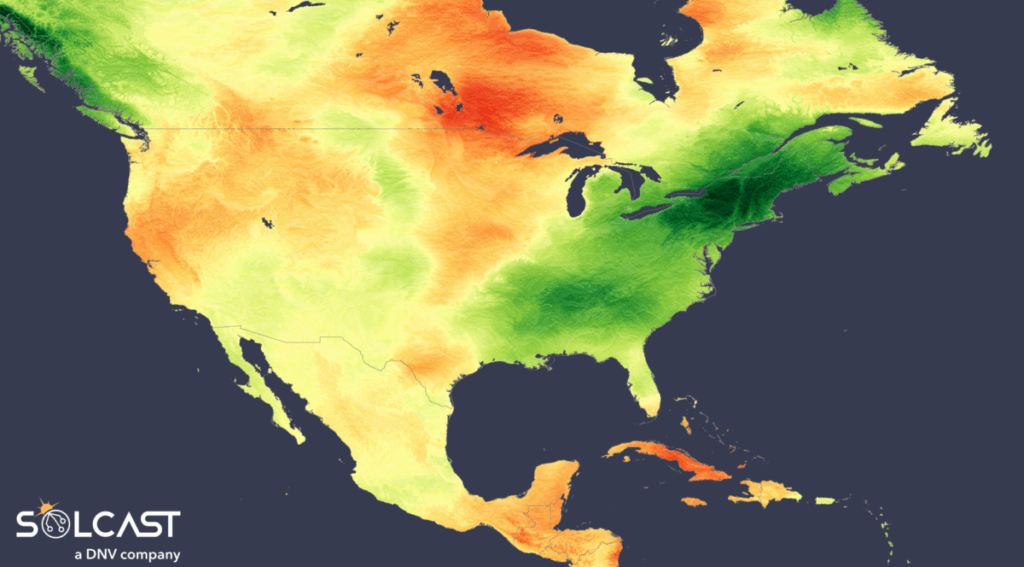In a new weekly update for PV -MagazineSolcast, a DNV company, reports that a low-pressure system above Midden-Noord-America is suppressing solar radiation on the east coast in May, while supporting moderate profit in the West and Midwest.
A low-pressure system locked over Central North America was the sun climate of May over the continent, pulled cloud and rain over the east while the West leaves under the influence of stabilizing high pressure. According to analysis using the Solcast APIThis division suppressed the radiation on the east coast and supported moderate profits in the west and the midwest, so that a geographically split solar profile profile was set up.
During May, an persistently anchored low pressure trough anchored over Canada and the central American storm systems across the east coast. As a result, solar radiation fell over the most important regions. From New York to Maine, the radiation was up to 30% below the long -term average for this time of the year. Quebec and large parts of the southern US also registered shortages of around 20%. The impact of these conditions was exacerbated by intense rainfall; In mid-May, a particularly slow moving storm system led to flash floods and regional reports, which further disturbed the solar potential.
The western half of the continent, on the other hand, was under the influence of a dominant high -pressure system that brought cool and dry conditions. These stable atmospheric conditions helped to maintain slightly above -average radiation levels in a large part of the American West and most of Canada. This continuation of a pattern set by March brought consistency to the availability of solar energy, although the temperature remained under the normal and drought, especially in the Rocky Mountains.
The Midwest emerged as the striking region of May for solar conditions. While convective storm activity resulted in much needed rainfall that illuminated some drought-to-careness, the skies remained clear enough to support strong radiation. The majority of the region saw radiation levels about 10% above average, with peak values of up to 30% above normal from Minnesota to Central Canada. However, this same dry warmth led to significant natural burning activity in Manitoba, with smoke following Europe, as previously reported.
Further to the south, high pressure was also the May weather of Mexico, the distraction of Pacific Vocht Offshore and the prevention of considerable rainfall. The result was a hot than average and drier month, especially in southern regions. Solar radiation responded accordingly, with values above average in the south and almost normally elsewhere in the entire country.
Dissolved Produces these figures by following clouds and aerosols with a resolution of 1-2 km worldwide, with the help of satellite data and own Ai/ml -algorithms. This data is used to stimulate radiation models, so that Solcast is able to calculate the radiation at high resolution, with a typical bias of less than 2%, and also cloud-tracking predictions. This data is used by more than 350 companies that manage more than 300 GW of solar assets worldwide.
The views and opinions expressed in this article are the author, and do not necessarily reflect it by PV -Magazine.
This content is protected by copyright and may not be reused. If you want to work with us and reuse part of our content, please contact: editors@pv-magazine.com.
Popular content



